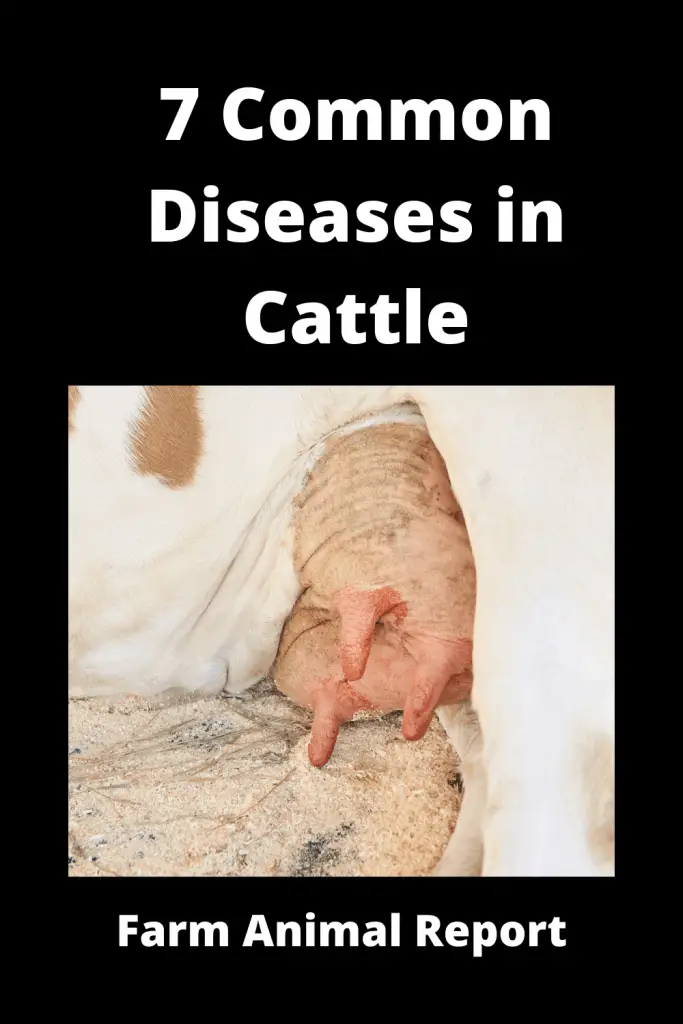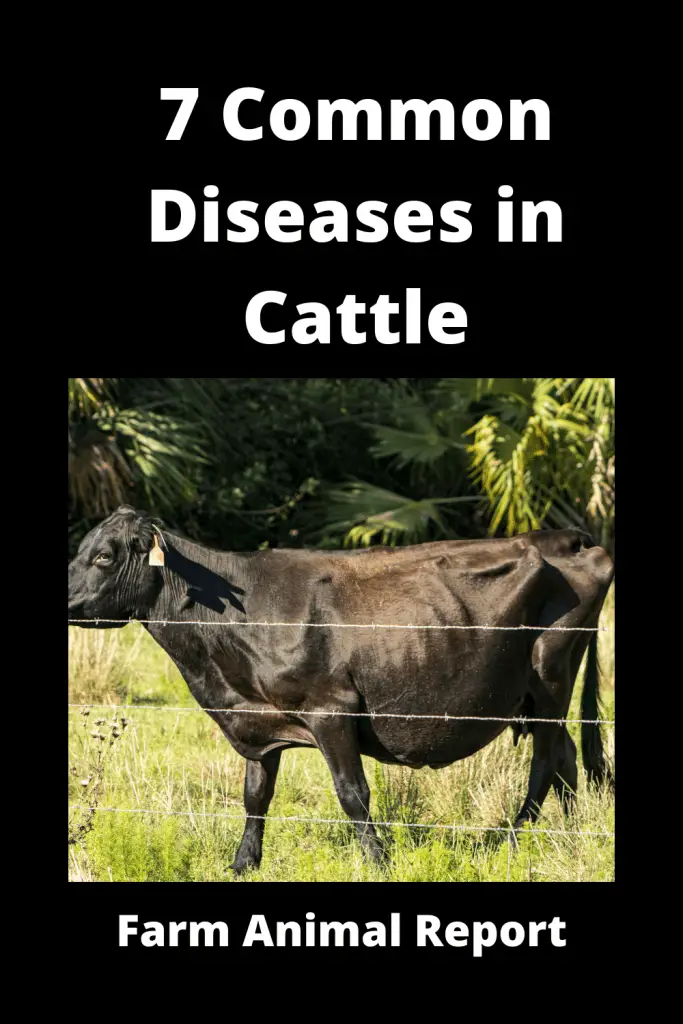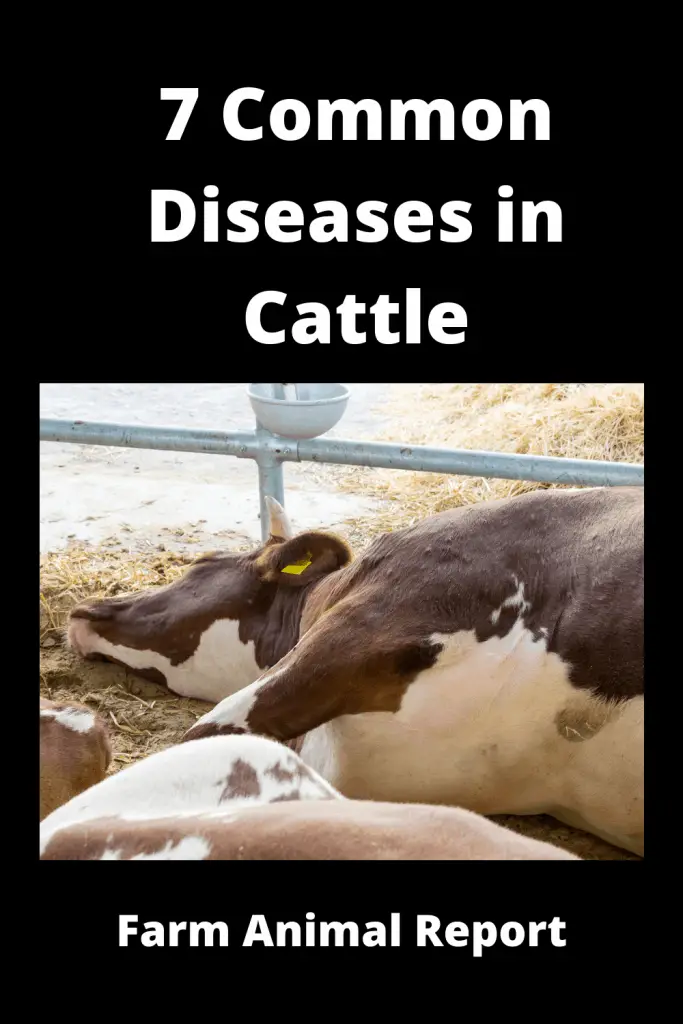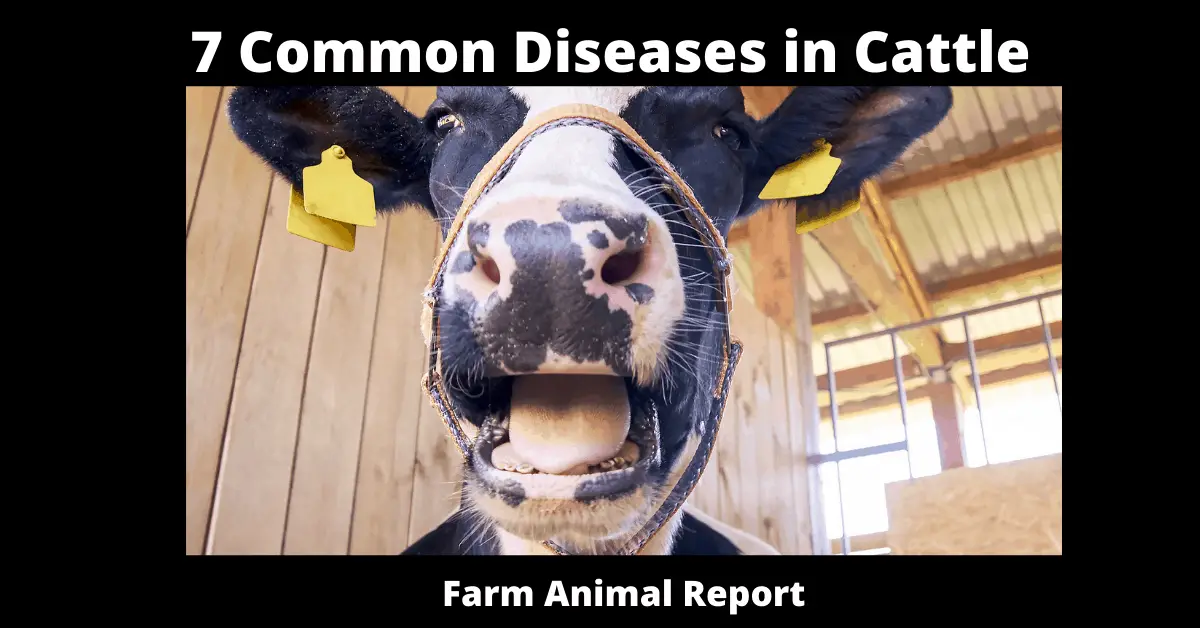Common Diseases in Cattle and its Prevention
Diseases in Cattle, are those diseases that are present in cattle as a common disease. Common diseases are those which can lose millions of rupees every year.
Generally, animals are born without any diseases or parasites. But, due to improper sanitation, feeding, care, and management. One should be vigilant against cattle diseases as dairy cattle are affected by a variety of diseases. Knowledge of cattle diseases is necessary from the public point of view as many diseases can be transmitted to men through milk.
Here we will discuss the common diseases in cattle and its prevention.
Prevention means how can we prevent our cattle from these diseases.
1. Black Quarter:
The black quarter is caused by Clostridium chauvoei, a gram-positive rod-shaped, spore-forming toxin-producing anaerobe. Cattle are the most susceptible host. Cattle of all breeds are susceptible but the incidence is more in cattle having 4 to24 months of age group and good body condition.
The disease may spread from contaminated soil. The contamination of soil is due to infected carcasses which cause pollution of the land. The organisms gain entry through the ingestion of infected feed or possible through contamination of the wound.
The disease is an acute infectious but not the contagious disease of cattle. The disease is characterized by the development of focal gangrenous and emphysematous myositis.
The disease is widespread in most of the tropical countries of the world. This disease is widespread in the U.S.A. In the U.S.A, the disease is caused by Clostridium septicum and Clostridium chauvoei.
How Can We Prevent our Cattle from BQ?
There are the following preventive measures:
- Because the disease is associated with infection from the soil, the cultivation in the soil may be avoided.
- The young animals should be kept out of such an area.
- The dead body should be buried or burnt.
- The dead body should not be allowed to skin.
- The calf should not be allowed to graze in this pasture.
- It can be prevented via passive immunity. This type of immunity is induced by the inoculation of immune serum. The prophylactic dose is 15ml for cattle. The duration of protection is about 2 weeks.
- Can be prevented through vaccines. There are two kinds of vaccines. One is the Black Quarter vaccine (Polyvalent). This vaccine is used for prophylaxis against B.Q. in cattle. It is inoculated by subcut. Route only. The dose of this vaccine is 5ml for cattle. The other vaccine is Black Quarter Vaccine (BAIF). This is an inactivated suspension of Cl. Chauvoei through formaldehyde solution and adjuvanted with gel/Aluminox for double immunity.

2. Haemorrhagic Septicaemia (HS):
This disease is caused by Pasteurella multocida. This disease is also known as Pasteurellosis. The disease is characterized by the high rise of temperature, depression, and the presence of multiple hemorrhages and by signs of pneumonia, pleuritis, pericarditis, and arthritis.
The disease is wide spread in almost all parts of the tropical and sub-tropical countries. The disease causes heavy economic losses to the cultivators and losses are considered in cattle. One percent death rate in cattle due to this disease in the feedlot cattle has been reported from the U.S.
Young growing cattle within the age of 6 months to 2 years are most often affected.
How can we prevent our cattle from HS?
Prevention through immunization:
Immune serum should be injected subcutaneously at the rate of 15ml for cattle up to 300kg bodyweight.
Prevention through vaccine:
Various types of vaccines may be used for prophylaxis.
- BAIF’S Haemorrhagic septicemia vaccine:
The vaccine consists of P. multocida type-1, inactivate formaldehyde solution. It is further adjuvanted with BARIAH-GEL/Aluminox for ensuring lasting immunity.

3. Malignant Catarrhal Fever:
The disease is caused by a cell-associated poly karyon forming herpes virus (bovid herpesvirus 3). The virus remains strictly adhered to R.B.C. or W.B.C. of blood.
It is an infectious almost invariably fatal disease of cattle characterized by catarrhal inflammation of the nasal and oral mucosa (inflammation of the upper respiratory and alimentary epithelia), keratoconjunctivitis, encephalitis, rapid dehydration, and generalized enlargement of lymph nodes.
The disease is worldwide in distribution and prevalent in both temperate and tropical zones. The disease has been recorded in Canada, Australia, Southeast Africa, and Brazil. The disease has been reported in epidemic proportions in North America.
The exact mode of infection is not known. The disease is reported to be transmitted through the wild beast.
How Can We Prevent our Cattle from MCF?
- The mode of transmission of the disease is not fully known.
- Sheep have been considered as a spreader of field outbreak. Therefore, the rigid separation of cattle from sheep is suggested.
- The feeds used by ewes and lambs should not be allowed to cattle.
- Recovered animals are usually immune to forthcoming infection.
- Still no effective immunization, methods have been discovered.
4. Infectious Bovine Rhinotracheitis (IBR):
The disease is caused by bovid herpes virus-1 or bovine herpes virus. It is an acute highly contagious viral disease of cattle characterized by high temperature, rhinitis, dyspnoea, abortion, meningo-encephalitis, kerato-conjunctivitis, and pustular vulvovaginitis.
The disease is widely prevalent in all parts of the cattle in the world. The disease was first noted in U.S.A as an emerging disease. The disease has been noted in cattle of Europe, Asia, North America, Africa, Australia, and New Zealand.
Cattle of all ages are affected. The virus is usually transmitted through infected feed and water. The virus can be spread through ocular, nasal and reproductive secretion and excretion of the infected cattle.
How Can We Prevent our Cattle from this Disease?
- Prevent the entry of a BHV-1 carrier to the herd, or direct contact with infected animals.
- When you buy the bull make sure he is not a carrier for IBR.
- If the disease is present in the herd, all the animals over 12 months of age are tested. If you find the animals then separate them.
- Vaccination is an effective way to control this disease. The dose of this vaccine would be 2ml/SC/IM route. The booster dose should be given after 3months. Calf 2ml/SC/IM at 4-6 weeks of age. Booster at 3 months after.
5. Bovine Viral Diarrhea (BVD):
The disease is caused by a pestivirus. BVD is a subacute, acute, or inapparent contagious disease. It is characterized by a high rise in temperature and diarrhea.
The disease may occur during all seasons, but a higher incidence is observed during rainy seasons and winter season also. Cattle of all ages and sexes may be affected but the incidence is more in 6 to 24 months of age. The disease may spread from contact with infected animals to contaminated feeds.
The disease was first identified in U.S.A. where it caused significant economic losses. The disease has been reported from Africa, India, Bangladesh, Pakistan, central, south, and North America.
How Can We Prevent Our Cattle from BVD?
- All the affected animals should be isolated during an outbreak.
- All sorts of hygienic and sanitary measures are to be reported to inhibit the further spread of the virus.
- Calf born of recovered mother acquires passive antibody through colostrums and thus gets partial protection. This lasts for about 6 months.
- Artificially passive immunity can be transferred by antiserum.
- A modified live virus vaccine has been suggested to control the disease. It should not be used in pregnant cattle.
- Over 6 months old cows are to be vaccinated two times at an interval of two weeks with the killed vaccines.
6. Foot Rot:
The disease is caused by Spherophorous necrophorus. These are large rod-shaped gram-negative organisms. This is an infectious disease of cattle characterized by inflammation, necrosis, and ulceration of the inter-digital space, coronary bands, and posterior limbs resulting in lameness.
This disease is widely prevalent in tropical countries. The disease is influenced by factors which help in the breakdown of skin such as continous wet and muddy condition or rough ground.
How Can We Prevent our Cattle from this Disease?
- Animals should be placed on dry, smooth surfaces in indoor conditions.
- Infected animals should be isolated from the rest.
- Footbath should be given with 5% copper sulfate.
- Chlortetracycline @ 75 mg/animal daily in the feed as suggested.
7. Mastitis:
Mastitis is the term that denotes the inflammatory condition of the udder irrespective of causes. It is a global problem. It is characterized by physical, chemical, and microbiological changes in the milk and pathological changes in the glandular tissues of the udder. A large number of species of microorganisms have been implicated as causes of mastitis. They are bacteria, fungus, mycoplasma, and virus.
Bacteria: Staphylococcus aureus, Str. agalactiae, Corynebacterium pyogenes
Virus: vesicular stomatitis; infectious rhinotracheitus.
Fungus: trichosporon spp; Aspergillus fumigates; A. midulus; candida spp.
How Can We Prevent Our Cattle from Mastitis:
- Reduction of the duration of infection
- Reduction of new infection rate
- Reduction of the duration of infection:
- Treatment of all quarters of all cows at drying off
- Treatment of clinical cases as soon as detected
- Culling of chronic clinically non-responsive cases.
- Reduction of new infection rate:
- Dipping of all teats following each milking
- Washing the udder and hand of the milker with antiseptic lotion before and after milking.
- Cleaning and disinfecting milking machine and the cup where the machine is used after each milking.
- Cows are usually dry off at the end of lactation. By abrupt stoppage of milking many new infections do occur. There is evidence that un-milked quarters are more susceptible to infection than a quarter those are being milked.
- Use of teat dipping:
Dips are generally effective against strep and staphylococci. All the lactating cows should be dipped after each milking. The entire teat should be dipped in the solution.
The dipping solutions are:
- Iodophore solution containing 1% available iodine.
- Hypochlorite solution
- Chlorhexidine in 0.5% to 1% polyvenylpyrrolidine solution.
- Teat sealing:
This is done by making a film by dipping teats in a solution of acrylic latex. By this, it is possible to reduce the udder infection rate.
- Milking order:
- The healthy non-infected cows should be milked first and known infected cows should be milked last.
- A newly introduced cow should be milked separately until the position of it is known. The cow should be screened through the California mastitis test (CMT).
- Bedding:
Concrete floor predisposes to mastitis. Bedding should be done with straw, saw dust or sand. Sand is the ideal bedding material since it has lower bacterial content.

See Our Guide – Ways to Make Money Cattle Farming
- Vaccines:
An autogenous bacterin against Staph. aureus has been used where the infective organism is highly antigenic. But, in general, vaccination so far is of little value in controlling mastitis due to the diversity of bacterial strain and their antigenic properties.
Vaccine consisting of inactive Strep. agalactiae. Strep dylagalactine, Strep. aboris, and Corynaebacterium.
Some procedures that can be followed to reduce the chance of mastitis:
- Teat sores are the common site for bacterial invasion and colonization. Therefore, this should be adequately treated with an antiseptic solution or a teat dip solution. Glycerine may be used against chapped teats.
- The disinfection of hands is to be made prior to milking.
- The udder should be washed and dried prior to milking
- Calves should be prevented from sucking milking of other cows.
- Mastitis milk should be properly disposed of, 5% phenol may be added to the infected milk at the time of disposal.
- The non-responsive quarter should be permanently dried up.
- A cow should be allowed soft bedding following parturition. The concrete floor should be avoided especially in case of high yielders.
- The first strip of milk should not be allowed to fall on the floor, they may be stripped in a separate container along with disinfectants in it.
- The floor of the milking shed should be washed with running water.
- All the equipment and containers should be cleaned and washed properly.
- Hygienic measures at milking time, udder preparation before milking milk cluster disinfection, post milking teat disinfection have been recommended as preventive measures.
- Control of fly population should be attempted, for these insecticides fly repellent spray is to make in the house and surroundings.
- Insecticidal car tags containing polyvinyl chloride or pyrethroids compound ear-tag may be applied.
Cattle Losses 2010
| Cause of Death | Percentage of Total |
|---|---|
| Respiratory Problems | 26% |
| Unknown Reasons | 18% |
| Digestive Problems | 13% |
| Birth Problems/Calving | 12% |
| Weather | 12% |
| Diseases | 5% |
| Lameness | 4% |
| Coyotes | 3% |
| Mastitis | 2% |
| Metabolic Problems | 2% |
| Carnivores | .9% |
| Poisoning | .9% |
| Domestic Dogs | .6% |
| Large Cats | .5% |
| Theft | .4% |
| Vultures | .3% |
| Wolves | .2% |
| Bears | .1% |


